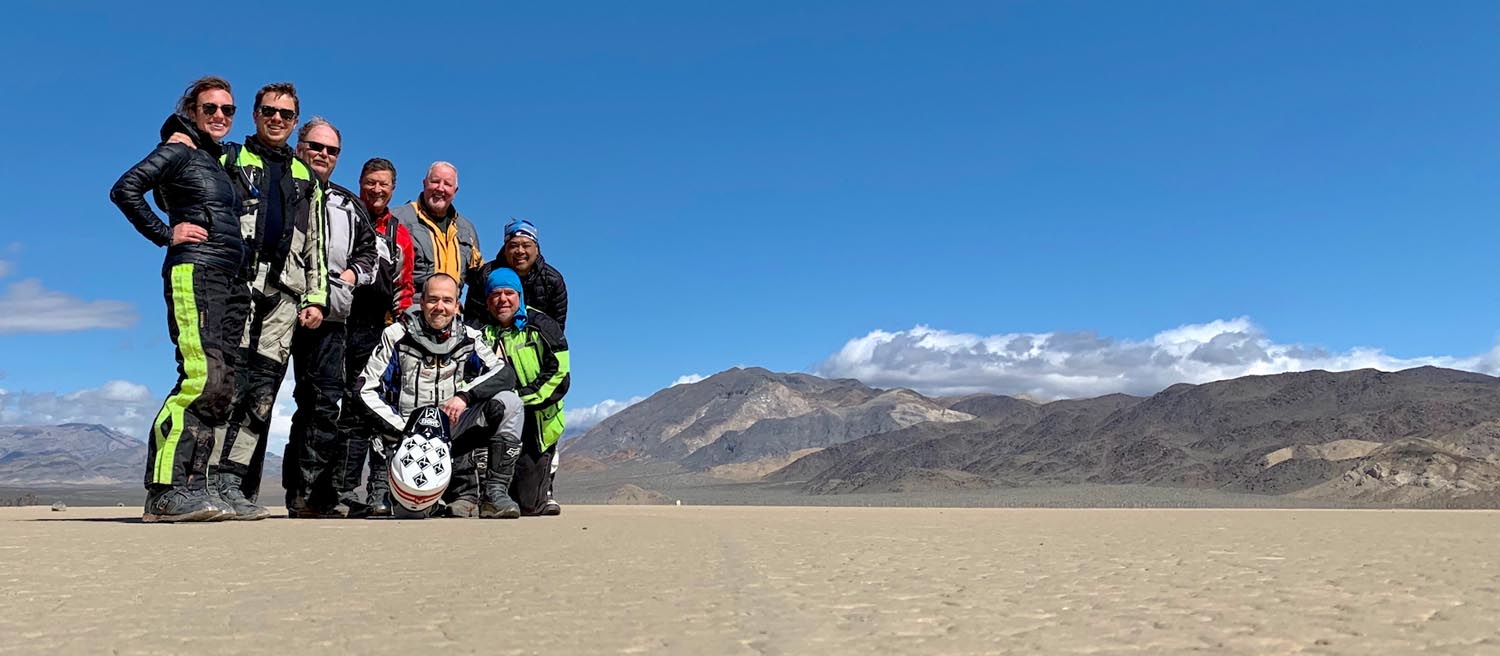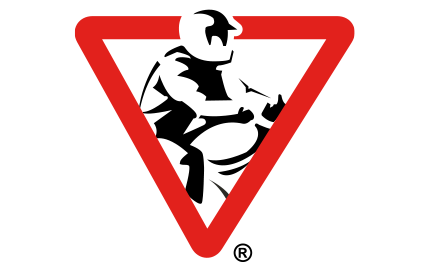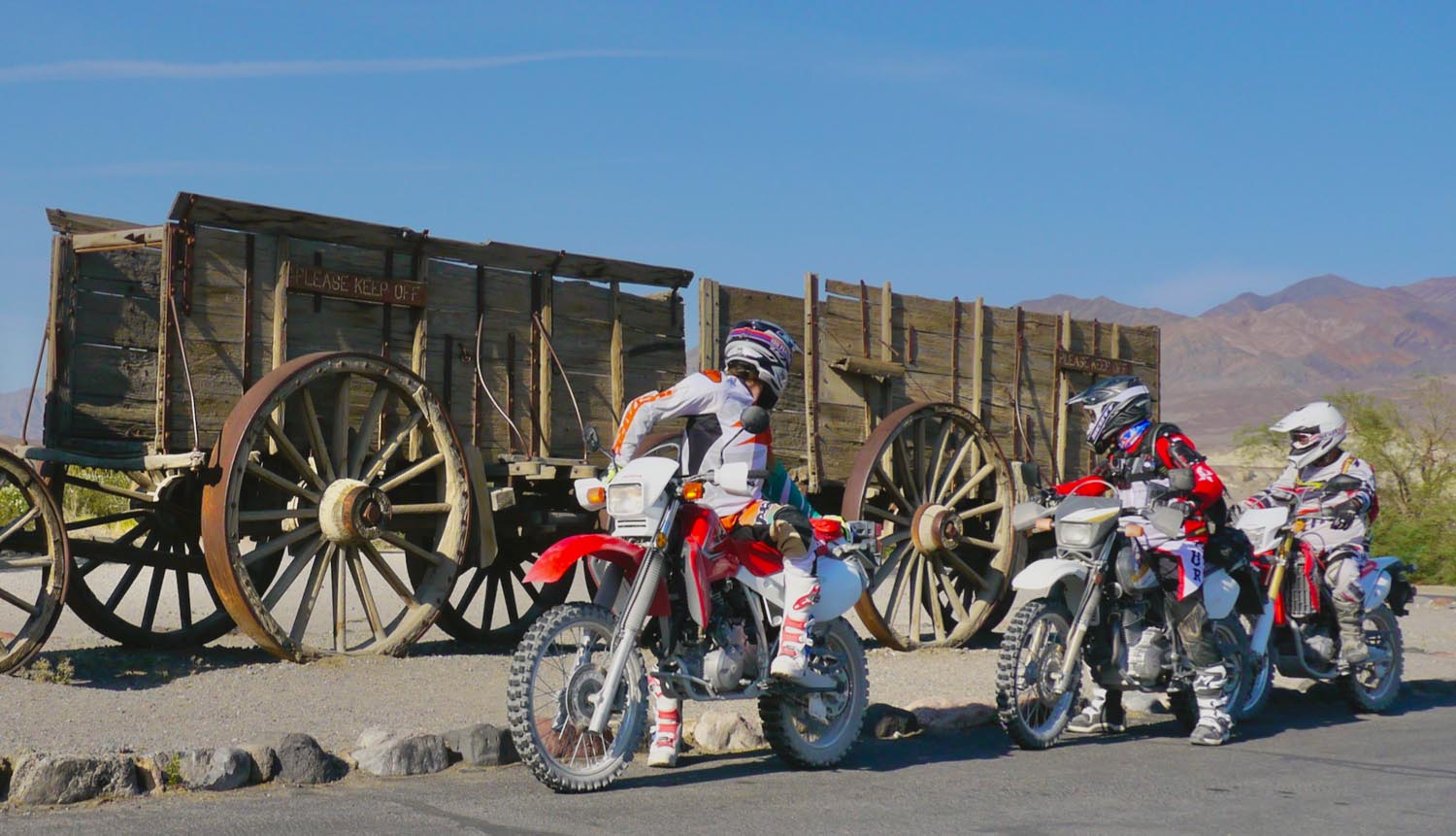
By Ty van Hooydonk
MSF DirtBike School coach
Death Valley has the wrong name.
I’ve enjoyed many of my very favorite days out there in this incredibly scenic desert, riding for hours across many miles with some of my finest moto friends and even a few recent graduates of the MSF DirtBike School.
That grim place name has been around since the 1800s, back in the days of the 49ers, when the California Gold Rush enticed pioneers to head west across the continent in search of metallic riches.
Trying an ill-advised shortcut, according to the National Park Service website, two parties of prospectors foolishly tried and failed to make it through the valley and over the mountains, and one man among them died while waiting for help. Legend has it that when they finally staggered their way out, a survivor looked back and coughed up the words “Death Valley.” As word spread about the tragedy, that forbidding label lodged itself in Western culture like a wooden wagon wheel buried in the hot sand.
Flash forward to our current century. Leave the ox wagons and mule trains at home. For a fantastic Death Valley experience, rely on some horsepower instead. Hands down, the best way to explore this magnificent national park is with a dual-purpose motorcycle. The official website states that the park has “more than 300 miles of paved roads, 300 miles of improved dirt roads and several hundred miles of unmaintained 4×4 roads.” License-plated, street-legal, dual-purpose bikes with DOT-legal but dirt-grabbing knobbies are the way to go.
Like a horseback rider, you’re actually out there when you’re on a bike, much more immersed in this incredible environment than you would be inside a four-wheel cage. No windows to roll up. No AC and no heater. Unless you have speakers tucked inside your helmet, no music either. It’s a genuine adventure. It’s you, the wind, the desert floor, the mountains, and the weather, whatever that is, changing with the time of day and the altitude. It’s also just you and the bike, and you can get into a fine dance-like rhythm, focused on the trail ahead while life’s annoying distractions mercifully disappear.
The other thing is that you can stand up, as you often should do on a dual-purpose bike. Your own legs give you considerable shock-absorbing ability, along with the motorcycle’s long-travel suspension. Your butt doesn’t take the brunt of all the bumps served up by the rocky trails. Hard to do that while buckled up in a 4×4. And with a smoother ride, you cover more ground as the hours pass by. You get to see a lot more.
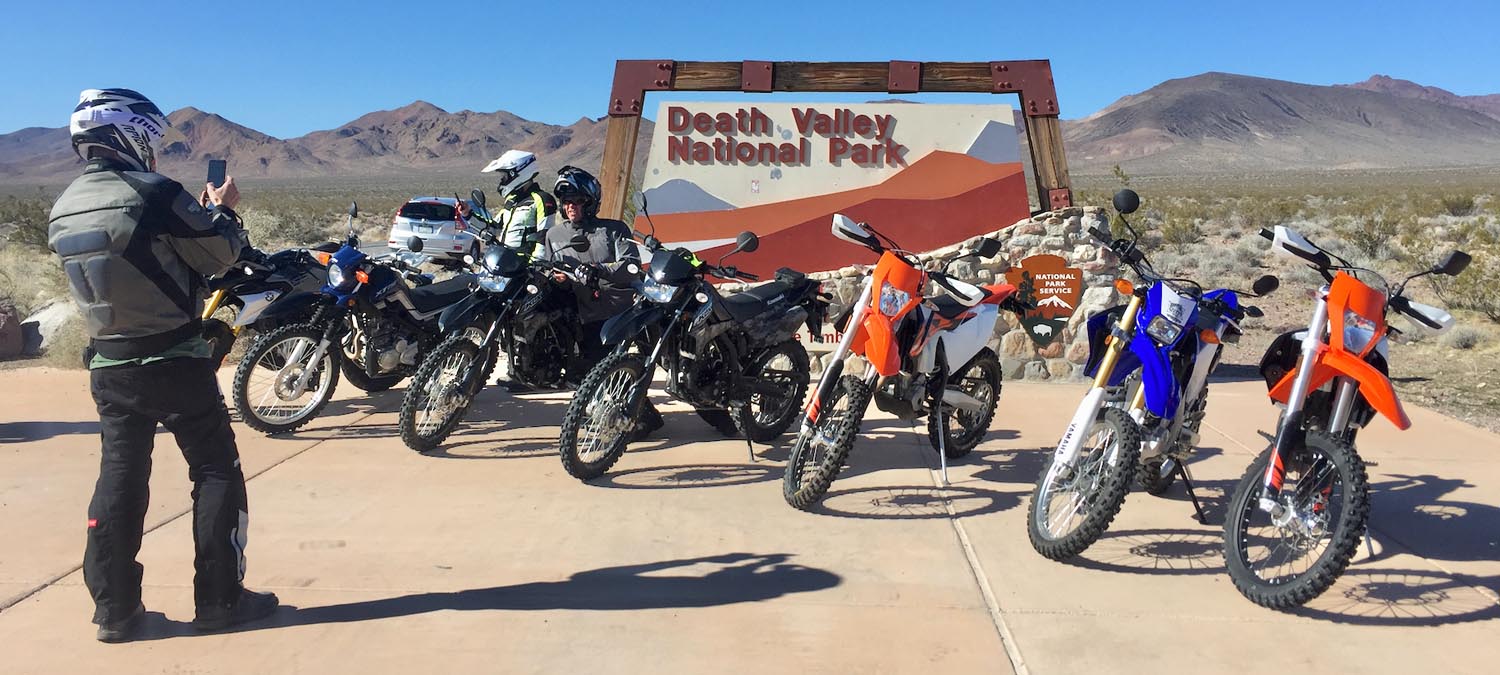
The right bike isn’t the only equipment you’ll need. The MSF T-CLOCS routine is just the start of your prep. The park is vast. If you get into some trouble, outside help is available but those first responders are far, far, away. Cell service out there is still about as good as it was 174 years ago. So, in an emergency, if you need to reach a ranger, you best be packing a rented satellite phone. I never head for the sands without one.
Add to that a first-aid kit, water, some energy bars, tools, zip-ties, safety wire, duct tape, inner tubes, tire irons, a telescoping stand to prop up your bike if you have to remove a wheel, and most important: a really cool friend with strong arms and meaty fingers. You want the kind of motohead who is happy to show you just how easy it is for them to fix a flat, in the middle of nowhere on a fryer of a day. Ask me how I know.
You do want to carefully pick your riding pals for a Death Valley excursion. Ones who ride within their limits and that of their bikes. Ones who are self-sufficient but also ride well in a group. Ones who will stick to the trails, tread lightly, leave zero trash behind, and thoughtfully pick up any they may find. Also, you want ones who can deal with the fact that convenient and well-maintained restrooms do not dot the landscape.
I’ve once ridden Death Valley in 115-degree heat, the kind of hellish temp one expects out there. But most often, I’ve been to the park when it’s had perfect riding weather, sunny and in the mid-70s. Choose to go in early spring or the middle of autumn and your normal off-road or ADV riding gear will likely do just fine.
All of the thought and preparation for a well-done adventure is absolutely worth it because Death Valley is a grand collection of some of the most astounding scenic, natural wonders on the planet.
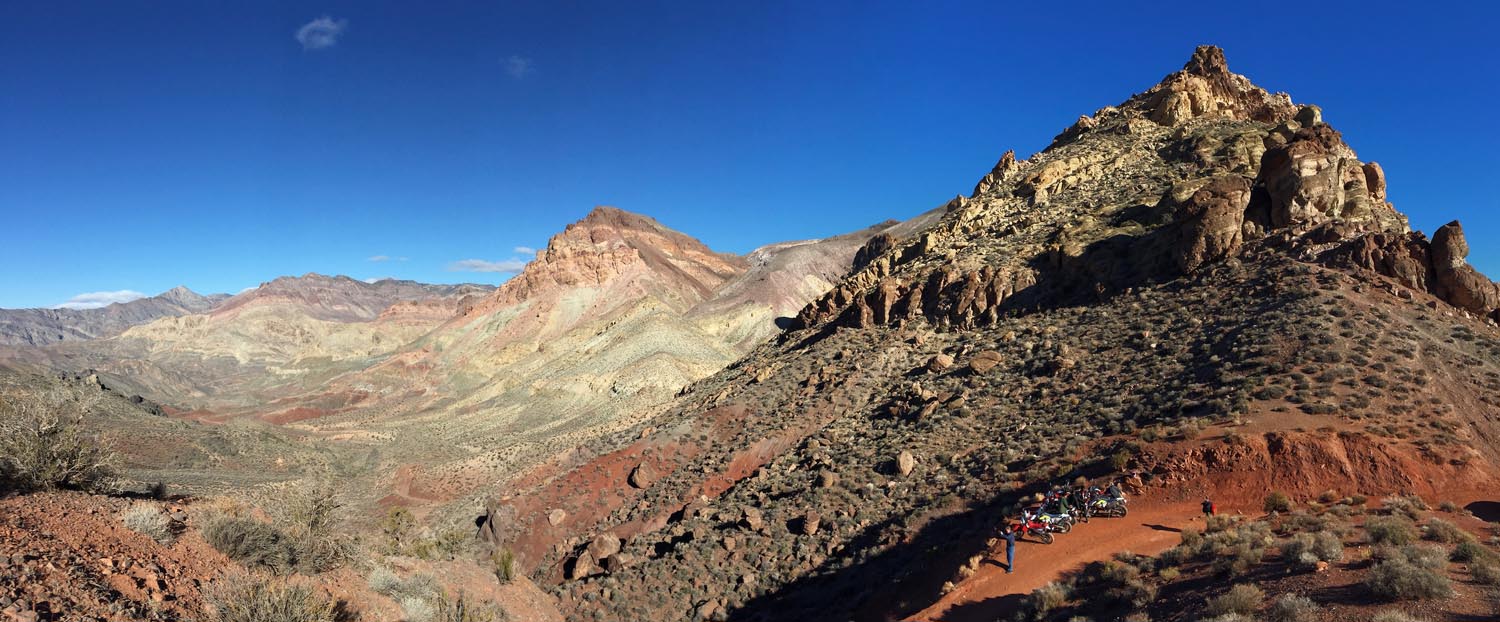
The crown jewel is Titus Canyon, with a 27-mile, one-way trail of dirt, sand, and rock that winds its way up to 5,200 feet and my very favorite view, and I do mean anywhere. On a clear day up here at the Red Pass cliff, with Mars-like soil at your feet, you park the bikes and look out, across miles of mixed scarlet, yellow, and even greenish desert, set against a brilliant blue sky. It almost doesn’t seem real.
From this peak you’ll twist down and around on a gravel path that will eventually inject you between huge towers of rock, right into the narrow canyon for which this route is named. At the end you pop out, sometimes into bright sunlight, the stone walls falling behind and the expanse of Death Valley suddenly spread out before you.
The real joy of Titus Canyon is that it’s not extremely difficult and you can enjoy it with all kinds of riders. The variety of trails in and around Death Valley provide options for experienced off-road motorcyclists who want some challenge – like recent graduates of the MSF Adventure Bike RiderCourse – and options for those riders relatively new to two-wheeling.
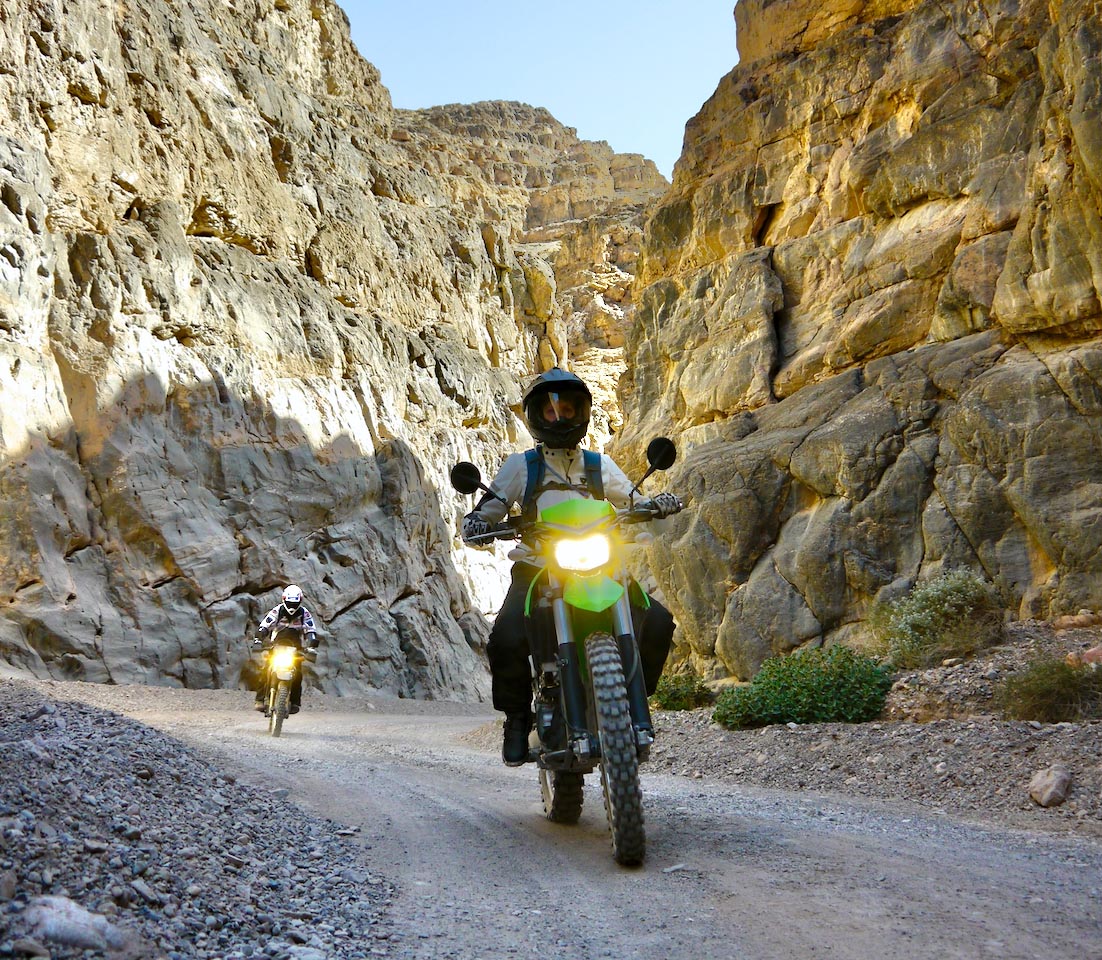
As an MSF DirtBike School coach, I’ve been able to take some beginners through a class, and then take them through Titus Canyon not long after, providing real-world mentoring along the way. The trail conditions change, depending on the most recent rain showers. But by and large, the park service ensures that the average four-wheel-drive vehicle can handle the journey. I’ve even encountered a guy in a Chevy Camaro (surely a rental) with the top down, bouncing up the hills to the summit.
A well-coached newbie on a dual-purpose bike can make it, too. And if there’s ever a spot where things get too tough, it’s no problem to offer to ride their bike past the obstacle for them, and then have them continue along with you. The best riding groups always take care of the least experienced or capable riders and make sure everyone is doing a pace they can handle and one that’s fun.

A more demanding off-road ride, with a different but almost equal payoff, is the trail to the Racetrack Playa. It’s 26 miles one-way, and since you likely want to return from where you started, that means 50 miles plus. The trail to the playa is flatter and less twisty than Titus Canyon, but the sand can be deeper and the rough path can be rockier. No matter, like so many other Death Valley trails and roads, this route is a thrill to ride.
Due to the distance, your group really must factor in fuel needs. There’s no service station out here and you might need to carry extra gas or have a strategically parked van or truck with enough fuel jugs for the group. Wherever you aim to go in DeathValley, you simply have to calculate the miles ahead and the range of your bikes.
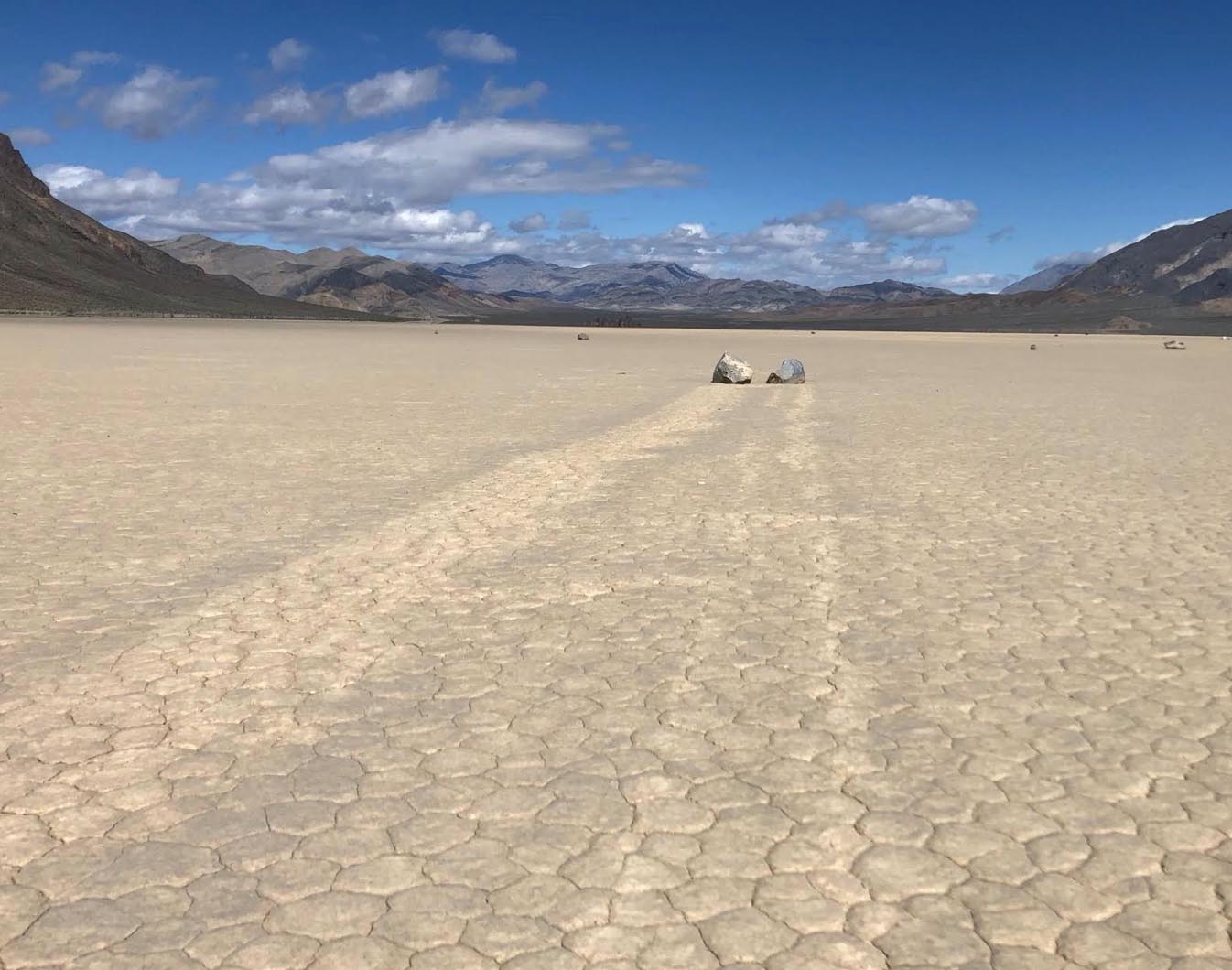
Once you get to the end of this trail, you’ll discover how the Racetrack Playa gained its sporting name. Crinkly, dried-mud lakebed, miles of it, stretches back to the mountains. And on that level earth you can find some good-sized rocks, often bigger than your helmet, that appear to have raced across the land, leaving clear tracks along the way. It can look like a frat house prank, a bizarre mystery left for passersby to solve. Turns out the moving rocks are a natural occurrence with a scientifically proven explanation. Freaky, and it sure makes for great photos.
While many of the best Death Valley rides are off-road, a street-legal dual-purpose bike doubles the fun. Several long ribbons of gray highways, split down the middle with contrasting yellow stripes, are draped across the land and lead to a number of great sights to see.
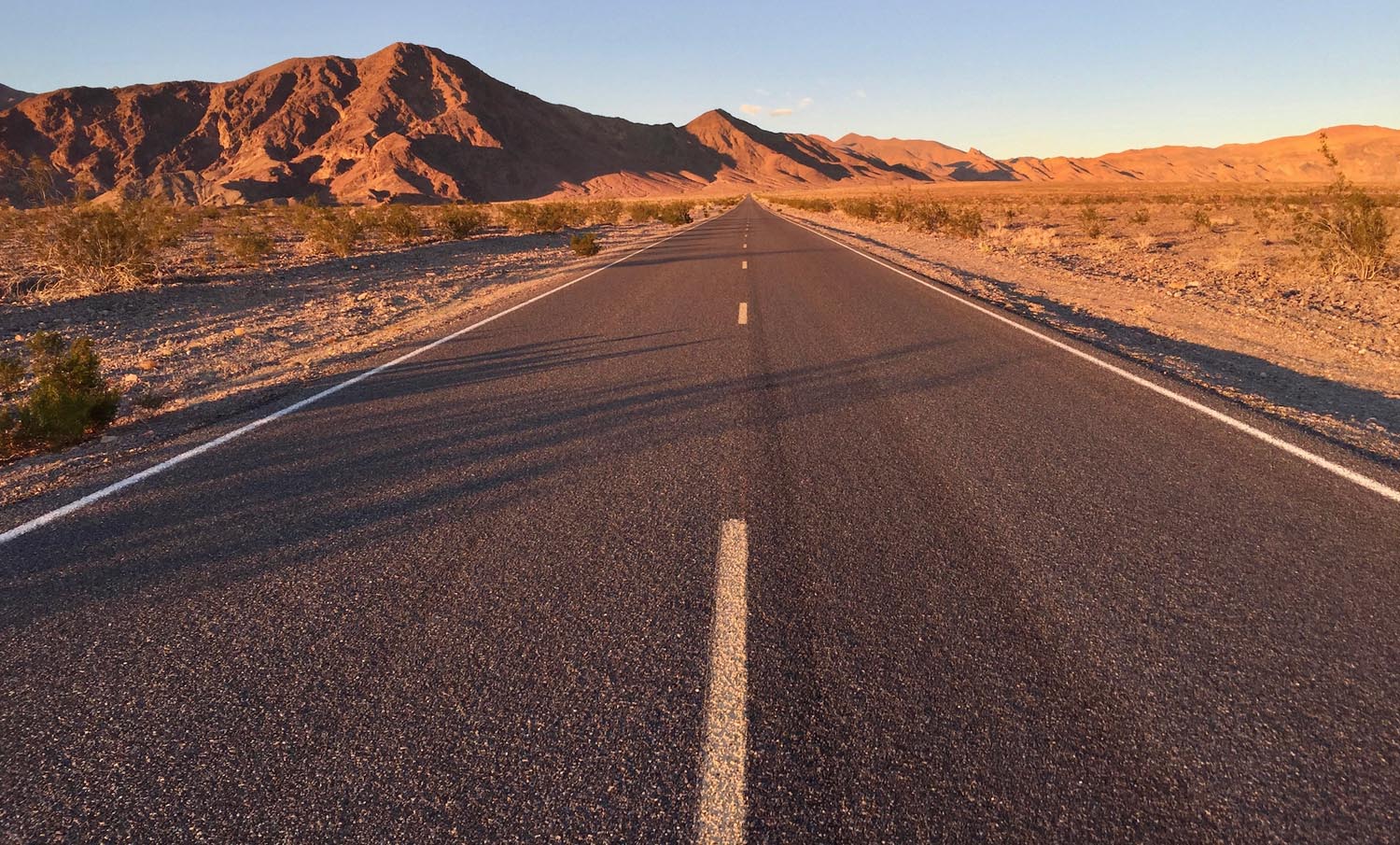
Starting in Furnace Creek, the park’s prime oasis of civilization – where there is food, fuel, camping, and lodging – you’ll ride 17 miles and descend, imperceptibly, to the white salt flats of Badwater Basin, the lowest point in North America. From the visitor area, you can look straight up 282 feet to a marker on the side of a rocky mountain. It reads: SEA LEVEL.
Head back the way you came but take a detour to Artists Palette. As the name suggests, a pastel rainbow of colored rock makes this a picture spot, all thanks to volcanic alchemy. Jump back on the bikes and ride around to the other side of the same mountain, park, and walk up to a lookout known as Zabriskie Point. The wrinkled folds of the hills look like a giant handkerchief, Dijon-mustard in color, dropped on the desert floor. Erosion plus time creating natural art.
Get back on the road and head south. Toward the end of a 20-mile trek, the road tightens, flicks left and right again and again, and climbs 5,600 feet to Dante’s View, overlooking much of the span of Death Valley. Stepping away from the small, paved parking lot, and walking slightly down the mountainside, there are some points where it’s hard to spot a road or a building or anything made by humankind. You see only the Earth itself.
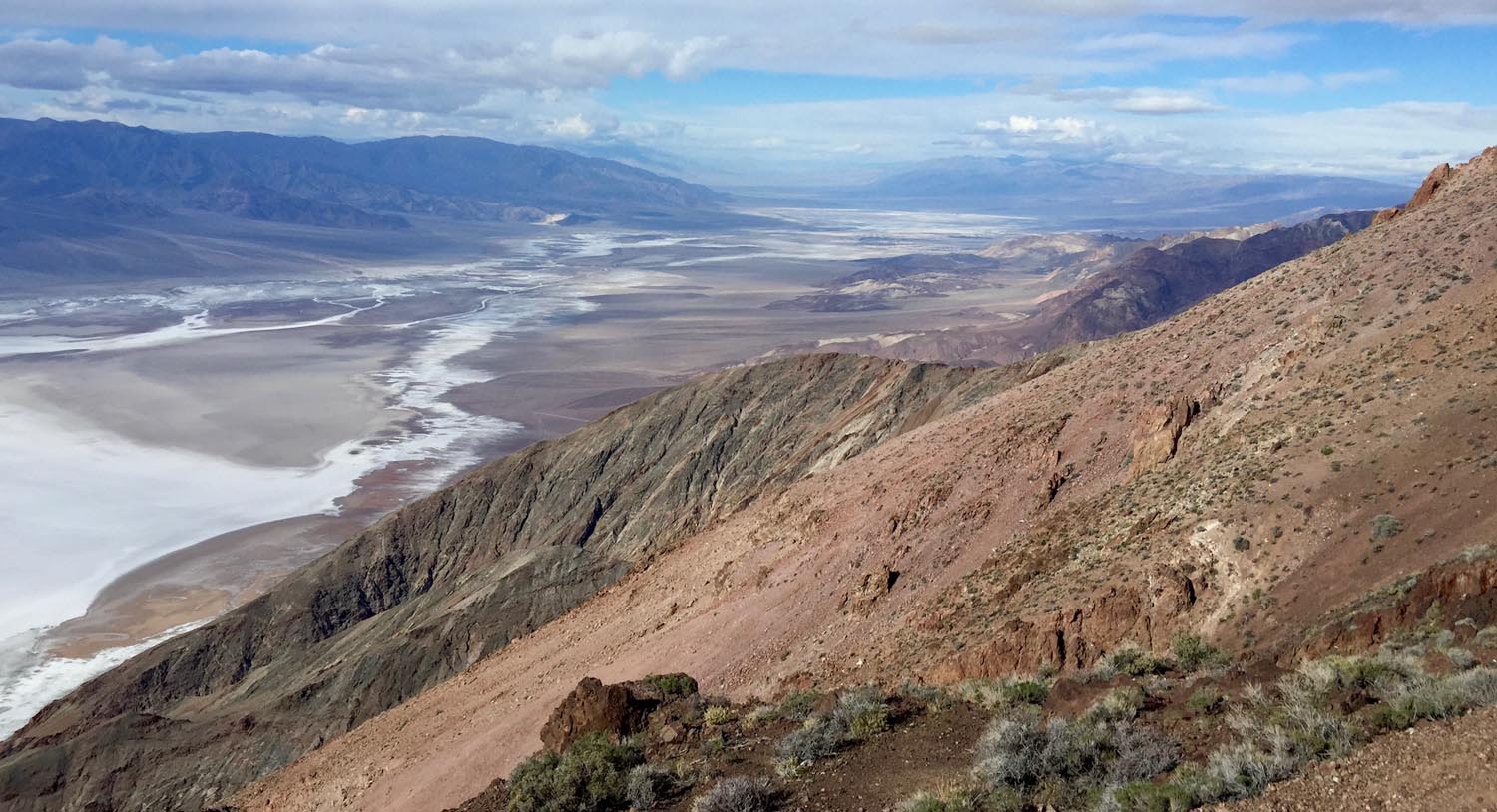
Looking off into the distance, with the valley floor, the mountains, and the clouds extending far into the distance, the planet somehow feels huge and ancient, as if you’re in the middle of a scene from millions of years ago. It might not seem out of place if you spotted dinosaurs down in the valley, or if a pterodactyl or two swept by in the skies above. Standing there with this vista it’s possible to get a small sense of how much geological time had to pass to create the scene before you – and how you’re just a tiny blip, a mere moment among all of it.
Two days and close to 200 miles of on- and off-road riding will let you see all of these park destinations. And they’re only the highlights. There’s much more to explore out there in Death Valley. And all of it is best reached on dual-purpose bikes, with good friends along for the journey.
There’s almost nowhere I’d rather be.
